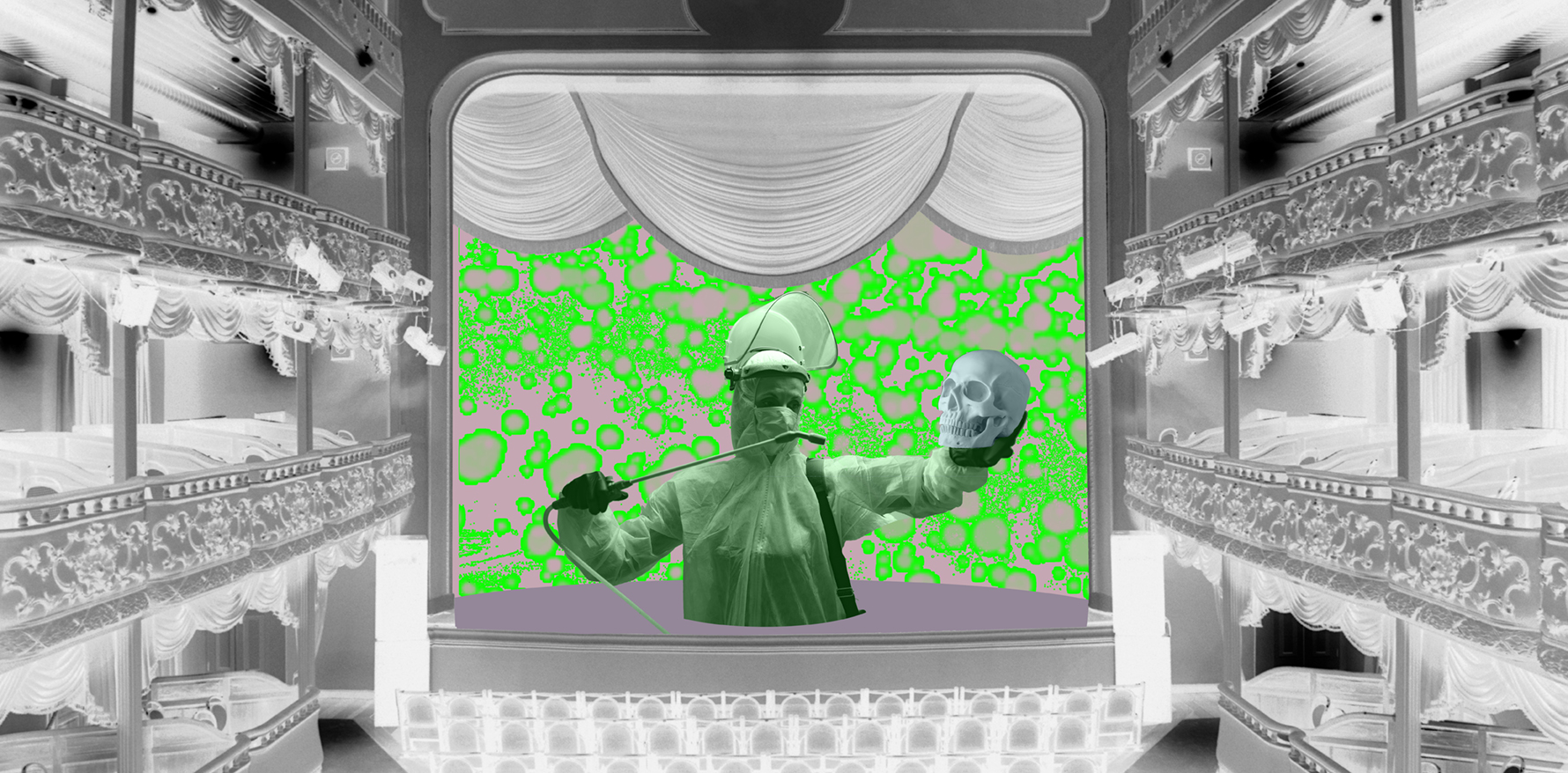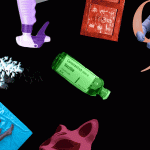The theatre of cleaning is based on a dogma (fomite transmission) that is unsupported by the same rigorous evidence demanded for aerosols – we need to change our thinking.
For many of us, the first practical response to the emerging pandemic was to more obsessively wash our hands following the avalanche of public advice.
We were a little surprised to learn that we had been doing it wrong, that 20 seconds was a long time, and there were all these hidden crevices in the skin that needed to be scrubbed. But the message was relatively easy to convey, and around the world, cheerful handwashing songs went viral.
Five months later, most of us have relaxed back to having a cursory handshake with the soap while the growing army of professionals in high-viz wait to remove our sweaty prints from surfaces in public transport, gym machines and restaurant tables – not to mention having schools and cafes shut down for a day or two for “deep cleaning” following their hosting of a positive case. Some countries have gone further, with huge fogging machines mounted on the back of trucks prowling the streets spraying disinfectants. Presumably these were lying in wait for just such a moment.
Such behaviour sits at the interface of deeply held social beliefs about cleanliness and concepts about how this particular disease is spread.
With this coronavirus showing itself to be an elusive pathogen capable of sudden bursts of transmission, it is time to reconsider the role of such hygiene in transmission and what are the most cost-effective interventions we should be applying – presuming that containment bordering on elimination is our strategy for the next several years.
It’s in the air we breathe
The adage that “coughs and sneezes spreads diseases” was a common theme of public campaign posters during the Spanish Influenza campaign 100 years ago and many of those strategies remain close to our current approaches of identifying and isolating symptomatic individuals. Although sneezing is rare in COVID-19, the idea of fevers and coughing remains central, hence the ubiquitous temperature monitoring and warnings about such symptoms as a trigger for self-isolation and testing.
What we have learned from studies over the last five months of this pandemic is that around half of all transmission events are from people without any symptoms. It seems that a significant minority never have symptoms, but can still transmit the disease, while those remaining who do develop symptoms were at their most contagious in the days just before or just after these symptoms developed – perhaps even before their cases were confirmed.
Additionally, we have learned that while an infected person is said to transmit to two or three others, this figure is only a community average under particular circumstances. In practice most infected people transmit to fewer than one on average, while a few people transmit to many. The reason for that is not clear, but probably is to do with a combination of the amount of virus in the upper airways, what the person was doing, and where they were at the time. (This combination of good news/bad news about asymptomatic spread and “super-spreading” probably occurs for other common community respiratory viruses as well, but knowing this did not matter much before.)
How respiratory viruses are transmitted within populations has also been the topic of longstanding explorations over the last 70 years. The UK’s “Common Cold Unit” conducted research from an old military hospital between 1946 and 1989, and human coronaviruses, as one cause of the “common cold”, were first isolated there in 1965.
Central to the research and unresolved debate has been the extent to which transmission occurs indirectly via surfaces (fomites) or directly through the air. Fomite transmission is an indirect route where a virus is first deposited on a surface (the fomite) such as on the hand of an infected person, or an object such as a doorknob, tabletop, utensil etc. and then is eventually transferred by touch to susceptible mucus membranes of the face (corner of the eye, inside the nose, lips) of the recipient.
Alternatively, transmission through the air occurs following the release of tiny airborne particles by the infected person and their direct inhalation by the recipient. Such particles are generated by a range of different activities, including coughing, but also by talking, singing, shouting and even breathing, and particularly by deep breathing. These particles have a wide range of sizes, depending on how they are generated. The more “violent/explosive/energetic” events, such as coughing, and some speech sounds, generate particles over a wide size range, while for other events, like breathing, the particles are smaller.
The number and size range also differs between people and varies with the intensity of activities. Typically, there are much fewer of the larger particles than of the small ones, although the total volume of virus-containing fluid associated with each depends on the events and total time over which they occur. To technically complicate this further, once released from the mouth the particles rapidly shrink in the air over a couple of seconds or less, to about a half to a third of their original diameter.
All this may sound quaintly academic and technical, but in some ways it is a matter of life and death as these distinctions greatly affect public health advice and policies.
Until early July, the WHO maintained SARS-CoV-2 was only transmitted by fomites and “droplets” i.e. particles >5-10µm in diameter. These “large” particles were considered to travel only 1-2m horizontally, before falling onto surfaces (ending up as fomites). The origins of the 5-10µm, or what time point this was measured at, or even how this cutoff was established is not entirely clear and probably relates to idealised behaviour rather than recent observations.
In fact, particles with “droplet” behaviour, that is short-distance projectile travel and rapid settling, are those of diameter >30-50µm, as originally described by Wells. Settling is always a function of the situation, being greatly influenced by ambient airflows, buoyancy in the surrounding air and thermal currents. Hayfever involves pollen grains of between 15-30 microns being inhaled many metres from their origin, so “large” particles do travel well when conditions permit.
According to the WHO, particles <5µm, which it termed “aerosols”, were only relevant to transmission if they arose through certain “aerosol-generating (medical) procedures”, not naturally. Aerosols remained airborne longer than droplets and therefore travelled further and required different control methods.
For the people who study airborne biological particles – engineers and some virologists – this was confusing to say the least, given what was known about the generation and aerodynamic behaviour of human-generated particles. Particle size was a continuum, depending on events and time, and there were no clear-cut boundaries.
In July the WHO relented slightly on its position, presumably in response to an open letter signed by 239 scientists and engineers calling for the recognition of aerosol transmission as another mechanism. However, the organisation set a very high technical burden of proof for the demonstration of aerosol transmission, concluding that “To date, transmission of SARS-CoV-2 by this type of aerosol route has not been demonstrated; much more research is needed given the possible implications of such route of transmission”. While short-range aerosol transmission could not be ruled out, especially in crowded indoor spaces, “the detailed investigations of these clusters suggest that droplet and fomite transmission could also explain human-to-human transmission within these clusters”.
This was directly aimed at the more than 1100 reports of such super-spreading clusters, some of which were viewed as supporting aerosol transmission. To many, the alternative explanation of them all being from fomite and droplet transmission seems unconvincing.
The WHO added that the use of RT-PCR assays to demonstrate airborne virus did not necessarily indicate that virus was capable of transmission and infection, since PCR detects RNA rather than live virus. This raised the bar for proof even higher, as the small quantities of virus which are airborne are very difficult to detect by culture methods, compared to more sensitive PCR.
All parties would agree that most but not all transmission occurs through close person contact, almost always indoors; the differences are largely around the proportional contribution by particles of different sizes and the distances over which such transmission can occur.
At present there are other significant gaps in our knowledge, particularly around what constitutes an “infectious dose” and whether this is simply a function of the numbers of viable virus particles to which one is exposed, the size of the particles carrying these (as this affects whether deposition occurs in the upper or lower respiratory tract, where susceptibility to infection probably differs) and over what time course such exposure accumulates. On top of this is the varying susceptibility of individuals.
So where does this leave us as we try to deal with a whack-a-mole virus within an evolving containment strategy? Given the profound economic and social forces reshaping our lives and future, is it time to dig deeper into how we behave to minimise these impacts?
There is an urgent need for a compelling public narrative about how this disease is transmitted. Only when there is a clear understanding of this can we plan and react as a community.
The WHO is correct in saying there are profound implications if aerosol transmission is established. However, it would also seem reasonable that the same criteria and doubts were applied to the other means of transmission: fomites and droplets.
The WHO has recently noted that there are “no specific reports which have directly demonstrated fomite transmission”, as the close-contact nature of transmission makes “the distinction between respiratory droplet and fomite transmission difficult to discern”. This does not seem entirely credible, as fomite transmission would be evident in the absence of people, from contaminated objects, and it is not.
Not only do the WHO’s 11 examples of surface contamination rely on PCR-based assays (insufficient for proof for aerosols), it seems a lower overall burden of proof is required.
Two other analyses of transmission patterns of this virus have attributed less than 5% of transmissions to fomites. As far as this writer is aware, there are no quantitative studies of fomite infection, that is measuring infection-competent (“live”) virus on real domestic surfaces, the quantity of this transferred to the fingers or its survival there over time, or the quantities subsequently transferred to the susceptible mucus membranes of the face (which occupy a tiny subset of the facial surface).
Fomite transmission requires such a quantitative three-step model to confirm. It would be unethical to test this on naïve subjects in the laboratory. Suddenly this whole major edifice of transmission is looking uncertain.
Blurred lines
It’s hard to walk away from a paradigm of fomite transmission, based on simulated survival of this virus on cardboard and steel, which has become a dogma. Just when everyone is disinfecting surfaces, it seems we should now be looking for new and meaningful practices that are more effective at reducing transmission.
No one would be bold enough to say that fomite transmission simply never occurs. There is some evidence from other viruses that washing the hands at least 10 times a day will reduce community spread of colds by around 20%. There is also some data that this virus may become re-aerosolised from dried fomites following disturbances of surfaces and medical gowns. The clear distinction between fomite and airborne pathways may turn out to be more blurred than we imagine.
But if we accept that fomite transmission is probably rare in practice, this leaves us in a position to focus approaches on direct transmission through the air. If only the largest droplets create fomites, and these are a minor route of transmission, the distinction between aerosols and small droplets should probably not exist. It is better to think of transmission involving particles of a range of sizes, most of which a few seconds after generation are in the size range 0.5-10µm (having shrunk from ~2-25µm), bridging the WHO’s definition of droplets and aerosols. These are generated and dispersed as projected concentrated plumes at close range (e.g. direct face-to-face conversation) and capable of remaining airborne at least for many minutes. In poorly ventilated spaces, they accumulate; in the outdoors they are rapidly diluted and dispersed. There is no magic radius separating transmission risk from safety – the delicate plume we produce travels between about 0.5 to 1.5m, depending on whether it’s from conversation or coughing, but the virus-carrying particles still persist in a rapidly diluting and dispersed form at greater distances. They might be inhaled within seconds of generation, or gradually over the next hour. In such a scenario, the other questions of infectious dose and time of exposure assume additional importance.
Was that five or six particles you inhaled? Do you feel lucky? Well, do you, punk? Does it really matter if you are hit by the blast of a shotgun, peppered by rounds from a 0.22 or hit by a slug from a 0.44 magnum? It’s all probabilities.
The theatre of infection
So how does this change our approaches? In terms of resources, we can be more relaxed about fomites on packages, “deep” cleaning and hand washing, although in practice these all form a human part of the “theatre of infection” – they provide something like a ritual of cleansing after a contagious event. But they should not distract us. All the handwashing in the world will make little difference to the big picture.
It is important we focus efforts on airborne spread. We need to think as if an extremely low but still real number of us are silently contagious. How do we fulfil our needs to socially contribute, make a living, behave as social but adaptive learning and pleasure-seeking animals, how do we redesign public spaces – transport, queues, workplaces, schools, sports stadiums, gyms, theatres, restaurants, large and small shops – to minimise transmission?
It’s not just the community but medical facilities that need to shift their thinking. Currently healthcare and frontline workers who are definitely exposed to the aerosols and droplets from known infectious patients coughing and talking at close range for long periods of time are only provided with surgical masks when more effective respiratory protection is available and needed.
What we have learned about this virus is that the transmission risks are greatest in close human contact, in enclosed spaces and in conversation. Transmission can be interrupted by distance, barriers and screens, airflow, and orientation (facing at 90 degrees, not face to face). Masks do work, not completely, but they help reduce both the airborne shedding of droplets by an infected subject, and the inhalation of droplets by someone in the vicinity. Some masks work better than others, at least for the smaller particles, but all offer reasonable protection when social distancing is not possible. (It remains a paradox that we can be so technically sophisticated in parts of our lives, but many people are destined to use cloth masks or poorly fitted surgical masks that have not evolved in performance since the Spanish Flu. We should be able to do much better.)
Other changes may be needed too: we may have to forfeit some privacy to improve contact-tracing; we urgently need inexpensive and rapid diagnostics, to easily identify asymptomatic carriers; and we need to invest in engineering approaches (UVC 222nm lighting, standards for air exchange based on CO2, air filtration, understanding the patterns of airflow to isolate dispersion, not spread virus around).
This virus is not going away any time soon, despite assurances; it will probably never disappear, although its predecessor did. But the 2003 SARS did not have the same characteristics as this model 2.0. We will learn to live and treat and hopefully not die, and modify and vaccinate and develop many social and technical ways of adapting, but an early step is an evidenced-based understanding and dialogue about how transmission occurs.
In my view, you can be more relaxed about washing your hands, but be an example to others by wearing a mask in all crowded indoor situations.
Euan Tovey is an associate professor, honorary affiliate senior research fellow at the Woolcock Institute, University of Sydney, with special interests in virus transmission and sampling biological aerosols.





